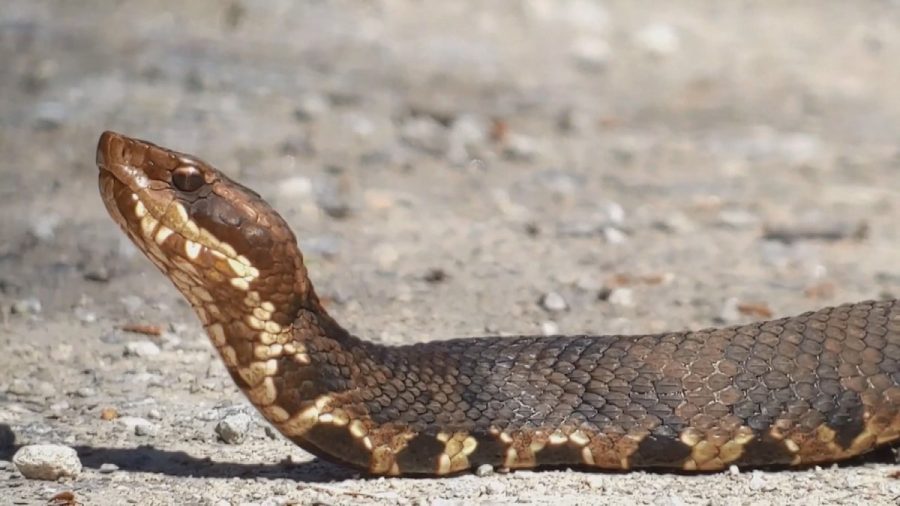Why did the snake cross the road? Go to Shawnee to find out
October 4, 2022
One of the greatest parts of living in the Midwest is that it’s abound in seasonal traditions that never cease to entertain. The majority of small Midwestern communities kick off the beginning of fall with county fairs and back-to-school shopping, and it only escalates from there. Then here come the corporations, flaunting their pumpkin spice themed goodies and leaf-loving merch. Influencers flood your Instagram feed with autumn inspired outfits. As the weather cools and the leaves begin to change, it can be hard not to get caught up in the utter joy that the season of autumn brings.
Perhaps you’ve participated in the Internet trend of making your very own spooky Coraline dolls, or gotten a group of friends together to go check out Richardson’s Adventure Farm and explore the World’s Largest Corn Maze, based in McHenry County. No matter your preferences, when the geese start to migrate, that’s when you know it’s time to swap out your t-shirt for a knit sweater and snuggle in.
Down in the Shawnee National Forest in southern Illinois, however, there is a very different way of celebrating the season.
If you were to travel to Shawnee National Forest today, you would find that the otherwise inconspicuous Forest Road #345 has been completely blocked off for all vehicle traffic until the end of October. This is due to an incredibly unique phenomenon that is found in no capacity anywhere else in the world, a feature that sets Illinois apart as an ecological miracle.
As it happens, the Shawnee National Forest sports a variety of ecosystems. To the east, the forests grow along huge limestone bluffs that were slowly eroded during the Ice Age, sporting a complicated system of crevices and caves. To the west, the park is made up of a network of gorgeous and cooling swampland, part of the Mississippi Basin that produces moisture and hydration during the scorching summer months. The positioning of Forest Road #345 coincides perfectly between these two landscapes, an incredible coincidence that allows humans a fascinating glimpse into one of the largest mass migrations of snakes in the world.
Although this might invoke a visual reminiscent of a ‘70s horror flick, the snake migration usually consists of no more than a dozen snakes at any given time on the 2.5 mile stretch of road. Due to the black heat-absorbing asphalt, the snakes often linger on the road during migration season, according to National Geographic, making it the ideal location to get a gander at these wild and mysterious creatures. Wildlife biologist Mark Vukovich estimates that over two dozen different snake species make the migration across the road. This vast regiment consists most commonly of cottonmouth snakes, a member of the pit viper family that produces a dangerous hemotoxic venom, western ribbon snakes, a subspecies of garter snake that frequently utilizes camouflage to entrap its prey, and mud snakes, a striking red and black reptile that is nicknamed “stinging snake” due to its sharp tail spine. Although closed to vehicles, the road continues to be welcoming to foot traffic, making the stretch a perfect research location for ecologists, herpetologists, or any old snake lover looking to get up and personal with these little beauties. Vukovich emphasizes that it is against park policy to handle the snakes, and travelers are encouraged to observe and even approach, but not touch the wide variety of creatures they may see crossing the road.
Yet life was not always so luxurious for these belly-slithering fellas. As it is with so many places in the world, the LaRue community deeply despised snakes, and biologist Steve Widowski recalls how locals used to make a game of it to see how many of the migrating reptiles they could hit with their cars. This particular activity actually depleted the snake population of Shawnee National Forest Preserve so significantly that by 1972 the park began their bi-annual closures of the road, even installing permanent gates to prevent any rogue travelers from going down the infamous Forest Road #345 — otherwise known as Snake Road.
Though this decision was a lifesaver for the snake population of Shawnee, snakes around the nation still are extremely under-protected members of the animal kingdom. In a study conducted by biologist Rich Siegel, it’s been found that one-in-four snakes are destined to become roadkill: a tragic occurrence that severely cripples the ecosystems snakes are a part of. Not only are snakes necessary as a food source to larger birds such as heron, they’re also needed to control the abundant population of ground mice and other small rodents. Without snakes to both eat and be eaten, the delicate balance of the ecosystem would be effectively destroyed.
This Halloween, you may be dressing up as Medusa or hiding rubber snakes in your friend’s toilet to prank them, and that’s all well and good. But don’t forget to give some love to our little crawler friends, too. Go take a road trip down to Shawnee National Forest this October and check out Snake Road, where you’re bound to run into at least a few species you’ve never seen before. Talk to the park experts or see if you can find a wildlife biologist and ask them about what they’re studying. Take some time getting to know the strange and unique beauty of these awesome creatures. Just don’t get too close; some of them are venomous! They are still snakes, after all.
For more information visit: https://www.fs.usda.gov/shawnee











